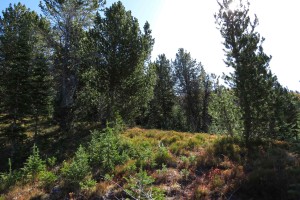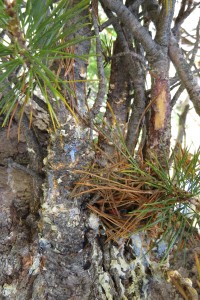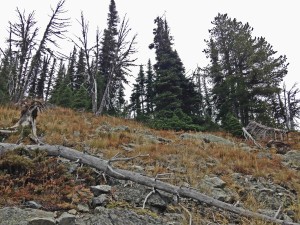2015 Evaluating Trends in the Health of Natural and Restored Populations of Whitebark Pine in Mount Rainier and North Cascades National Parks, Washington
General Project Information
Project Title: Evaluating Trends in the Health of Natural and Restored Populations of Whitebark Pine in Mount Rainier and North Cascades National Parks, Washington
Project Dates: 2015
Year project implementation started:
How many more years is this project expected to continue, if any?
Project Contact: (Please provide complete information for primary contact(s), e.g., name, position, phone number, email, agency name, unit/sub-unit)
Regina M. Rochefort, North Cascades National Park Service Complex, 810 State Route 20, Sedro-Woolley, WA 98284, 360-854-7202, regina_rochefort@nps.gov
Location (Land management agency or ownership and name of geographic area(s) where project was implemented. This information should be specific enough to identify a general project location on a map but not specific enough to compromise the project.)
North Cascades National Park Service Complex and Mount Rainier National Park
Cooperators: (List cooperating agencies and sub-units, other companies/organizations, and individuals as needed.)
Project Funding
Funding Sources (amount FHP/amount other incl. in-kind):
Forest Health Protection funding $9,913
Other funding $20,493
Total $30,406
Did Whitebark Restoration funding get used or obligated? (If not, please explain.)
Yes. The remaining $5,000 (included in FHP funding above) will be obligated later this year to a Statistics agreement.
Project Details
Scope and/or Size of Project or Treated Area: (Include a short description of the project or treatment area if helpful in understanding the scope of the project.)
Number of Acres or Other Units Treated, Monitored, or Surveyed:
Mount Rainier National Park 28 plots surveyed
North Cascades National Park 21 of 35 plots surveyed
Specific location of project or treated area(s): (If desired, add more specific project location information here, e.g., UTMs, Lat-long, specific landmark. Otherwise, indicate if more information is available by request.)
Objective(s) (from original request):
1) Survey health of whitebark pine populations in natural and restored populations in North Cascades and Mount Rainier National Parks
2) Determine trends in whitebark pine health including % infection and mortality due to blister rust; % mortality due to mountain pine beetles
3) Describe demographic distribution of saplings, seedlings, and mature reproductive trees to predict longevity of each population
4) Develop restoration prescriptions for each stand/population
Planting: (Please answer the following questions if the project includes plantings or cone collections.)
Number of seedlings planted (list by location if applicable): N/A
Was the seed source screened for resistance? (If other, explain.)
Were Plus trees used?
Results/Outcome:
We are just entering data into our databases now and conducting QA/QC on the data. We are disappointed that we did not complete surveys in North Cascades, but we were trying to use crews to do several projects simultaneously and the early summer made this difficult because our crews were pressed to get to some sites earlier than we had expected.
Project Status (Is the project complete? If not, what remains to be accomplished and when?:
This project is not complete. We surveyed all plots at Mount Rainier National Park (28) and surveyed 21 of 35 plots at North Cascades National Park. We plan to complete the surveys at North Cascades in 2016, analyze the data, and develop restoration and management recommendations.
Will outcome meet objectives?
Yes. Even though we will still be surveying plots in the summer of 2016, we plan to analyze the data we collected in 2015 and have a partial report completed prior to the summer field season.
Project Follow-Up
Are there plans for monitoring or follow up? (If not, please explain.)
We will complete the surveys and analysis.
Changes Needed or Problems Encountered:
If the funding could have been transferred earlier, we would have hired another crew member because we found a crew of three is more efficient. We surveyed many of the Mt Rainier sites with two people and this slowed down our process. We also had one crew member leave early so this also decreased our speed.


